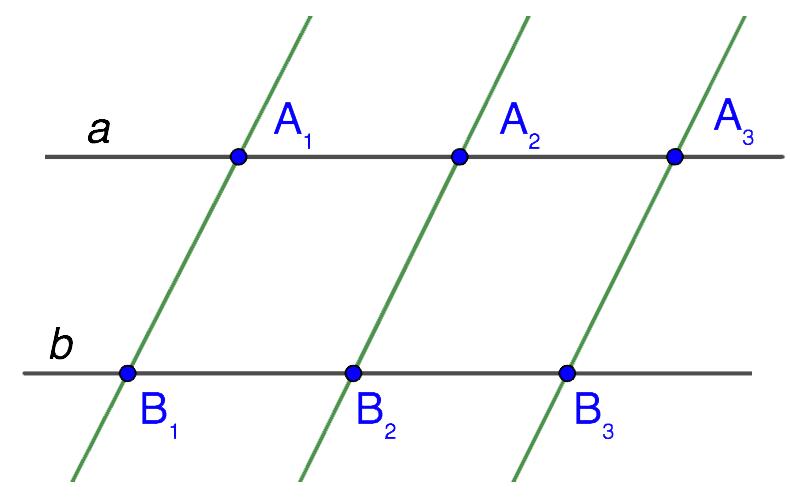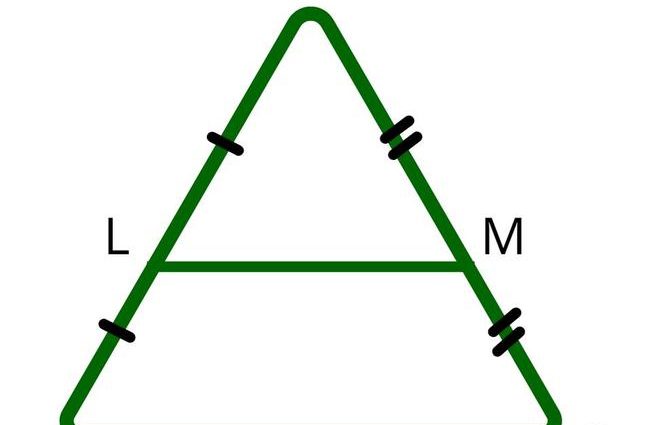In this publication, we will consider one of the main theorems in class 8 geometry – the Thales theorem, which received such a name in honor of the Greek mathematician and philosopher Thales of Miletus. We will also analyze an example of solving the problem to consolidate the material presented.
Statement of the theorem
If equal segments are measured on one of the two straight lines and parallel lines are drawn through their ends, then crossing the second straight line they will cut off segments equal to each other on it.

- A1A2 = A2A3 …
- B1B2 =B2B3 …
Note: The mutual intersection of the secants does not play a role, i.e. the theorem is true both for intersecting lines and for parallel ones. The location of the segments on the secants is also not important.
Generalized formulation
Thales’ theorem is a special case proportional segment theorems*: parallel lines cut proportional segments at secants.
In accordance with this, for our drawing above, the following equality is true:

* because equal segments, including, are proportional with a coefficient of proportionality equal to one.
Inverse Thales theorem
1. For intersecting secants
If lines intersect two other lines (parallel or not) and cut off equal or proportional segments on them, starting from the top, then these lines are parallel.

From the inverse theorem follows:

Required condition: equal segments should start from the top.
2. For parallel secants
The segments on both secants must be equal to each other. Only in this case the theorem is applicable.

- a || b
- A1A2 =B1B2 = A2A3 =B2B3 …
Example of a problem
Given a segment AB on surface. Divide it into 3 equal parts.

Solution

Draw from a point A direct a and mark on it three consecutive equal segments: AC, CD и DE.
extreme point E on a straight line a connect with dot B on the segment. After that, through the remaining points C и D parallel BE draw two lines that intersect the segment AB.
The points of intersection formed in this way on the segment AB divide it into three equal parts (according to the Thales theorem).










